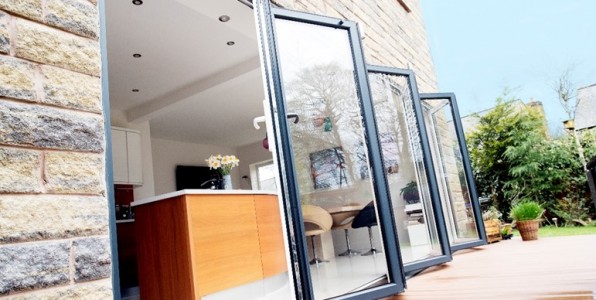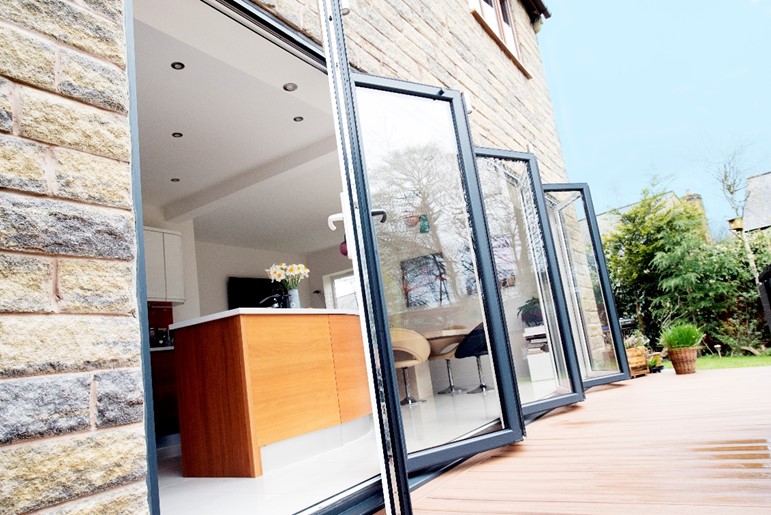How to identify energy efficient bi-fold doors

How to identify energy efficient bi-fold doors
Bi-fold doors are increasing in popularity,
with the market expected to grow by 7% year on year. Their aesthetically
pleasing modern design lightens up a room, creating an enviable inside and
outside space. The installation of bi-folds also has the power to increase a
property’s value by as much as 10% – it’s no surprise they’re so sought after!
While bi-fold doors are a sleek home addition, with the average large format
doors filling an aperture of over 3.5m wider and 2.1m high, product quality and
air tightness are incredibly important. It is recommended to review the doors
energy efficiency before purchasing. Less energy efficient models that let in a
draught will let heat out of a property and won’t be as protective of the
interior.
Here’s what you should look out for in order to
identify an energy efficient bi-fold door system:
- U-values
The U-value measures how effective a material
is as an insulator. As a rule, the lower the U-value, the more efficient the
material and therefore, the lower the annual energy bill will be. With
bi-folding doors you generally want a value of 1.4 or less to ensure that you
have optimal thermal performance. There are a variety of energy efficient
bi-folding doors, with low U-values, such as bi folding doors from Quickslide.
- Weather Testing
A suitable weather resistant bi-folding door
should have been rigorously tested to ensure they are watertight and remain
protected against an array of weather conditions. Bi-fold doors are subject to
a weathertightness test, more formally known as a BS6375 Part 1. This assesses the
air permeability (varying levels of air pressure are applied to the material,
testing the amount of air leakage), water tightness (water is sprayed at
varying pressures to see at what point it starts to penetrate) and wind
resistance (varying levels of wind pressure are applied to see what the maximum
resistance levels are). When purchasing a bi-folding door, make sure to check
the exact model has undertaken a weathertightness test. This will offer
homeowners peace of mind that the doors will keep their home fully insulated
from all weather conditions.
- CE Marking
CE Marking is a legal requirement for products
sold in the European Economic Area. It is mandatory for all UK manufactured
bi-folding doors to be CE marked. For a product to receive this accreditation,
the manufacturer must present evidence under a series of categories, including
thermal efficiency and weathertightness. Therefore, you can rest assure that
any door you are purchasing with this marking, will be compliant with required
performance characteristics, in line with UK requirements, such as
weathertightness and thermal.

- Polymide Thermal Barrier
Aluminium is a natural conductor, so to improve
the insulation of the door frame, they can be upgraded to include polymide
thermal barrier technology. Aluminium bi-folding doors that have been upgraded
to this technology over old resin thermal barrier give at least a 30%
improvement to thermal efficiency. The advanced profile technology creates a
thermal transmittance barrier between the cold outside and the warm inside.
This works to thermally secure the home, keeping it warm in the winter months,
and reducing the energy bills.
Comments are closed